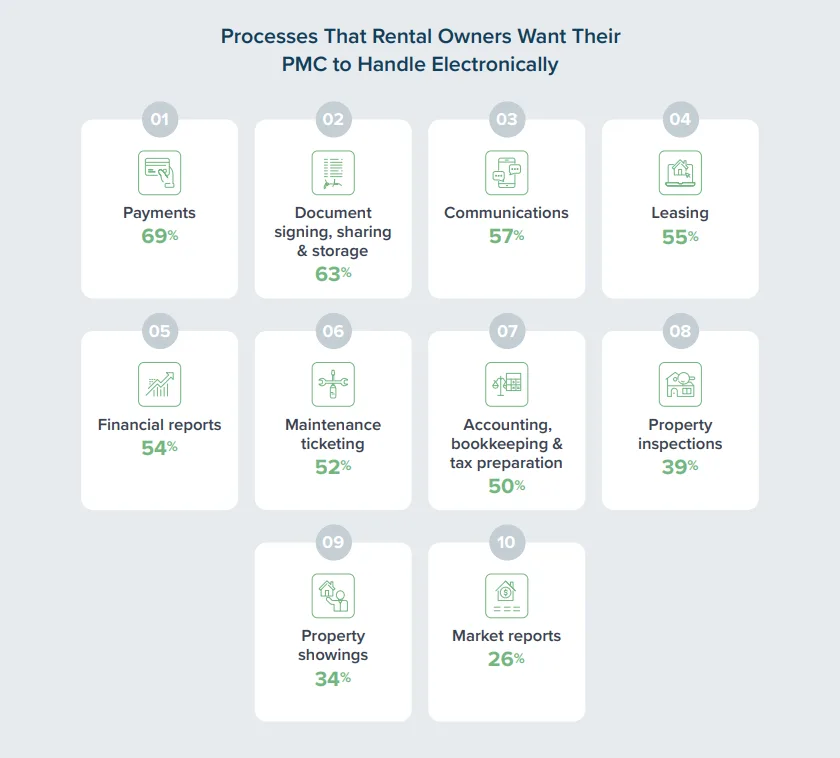Topics: Finance & Accounting, Property Management
5 Lean Property Management Accounting Strategies to Boost Efficiency
Posted on April 11, 2025
Written By Siddharth Sujan

In property management, financial efficiency isn’t merely about the numbers; it’s about making smarter decisions that support growth, even when margins are tight. As tenant expectations rise and market conditions remain unpredictable, property executives are juggling more than ever. And in that mix, slow, error-prone, and siloed accounting methods just don’t hold up anymore.
This blog breaks down five lean property management accounting strategies that can help teams move faster, spend smarter, and operate with more clarity. From real-time forecasting to better control of payables and receivables, these lean accounting strategies are designed to create leaner operations and sharper financial visibility. The goal? To build an accounting function that’s a real driver of long-term value.
1. STREAMLINED EXPENSE TRACKING: Smarter Systems, Sharper Visibility
The challenge: Tracking expenses across multiple properties is rarely simple. Manual processes, scattered approvals, and end-of-month reconciliations often delay financial clarity—and inflate costs.
The shift: Automated tools now make expense tracking smarter and faster, a core part of many lean accounting strategies in real estate today.
WHY IT WORKS
Real-time visibility = tighter control
Modern tools categorize and log every expense as it happens, giving finance teams a live view of their numbers. That means faster decisions, better forecasting, and improved property management cost optimization.
Cleaner data, fewer mistakes
Automating entries reduces manual errors, ensures consistency across your books, and supports stronger property management accounting practices across locations.
Systems that scale with you
These systems are designed to grow with your portfolio. Whether you’re managing five properties or fifty, automated tracking helps create more consistent, reliable, and leaner property management accounting functions.
Pro tip: Look for a platform that integrates with your broader financial tech stack. This improves collaboration across finance, ops, and leasing—keeping everyone aligned in real time.
2. DYNAMIC FINANCIAL FORECASTING: Smarter Planning, Stronger Positioning
The challenge: Traditional forecasting often depends on outdated spreadsheets and static budgets. When market conditions shift or expenses spike, it’s tough to adjust quickly, especially across a growing property portfolio.
The shift: With modern tools, dynamic financial forecasting has become a strategic must-have. Finance teams can now run real-time projections, helping property executives plan ahead with greater speed and precision.
WHY IT WORKS
Real-time insights = proactive moves
Forecasting software uses live data to support quicker, more informed decision-making. This gives executives a forward-looking edge and strengthens their overall property management accounting strategies.
Scenario planning with clarity
Instead of guessing, teams can model outcomes based on key variables like rent trends, occupancy shifts, or seasonal utility costs. That level of visibility plays a big role in property management cost optimization.
Lean planning that grows with you
Dynamic forecasting simplifies complex budgeting processes. By cutting down on manual work and offering a clear view of cash flow, it supports lean operations—even as your portfolio expands.
Pro tip: Don’t just use forecasting tools for budgeting—use them in boardroom conversations. Visual dashboards and scenario models can help you make a stronger case for capital investments, expansion plans, or cost restructuring.
3. ACCOUNTS PAYABLE & RECEIVABLE AUTOMATION: Faster Processing, Healthier Cash Flow
The challenge: Manual AP/AR processes are slow, error-prone, and often leave finance teams scrambling at month-end. Missed payments, delayed collections, and lack of visibility can throw your entire cash flow off balance.
The shift: Automation is changing how property management companies approach cash flow. By streamlining both payables and receivables, lean accounting systems keep the money moving—and the numbers accurate.
WHY IT WORKS
Speed without the slip-ups
Automated invoice matching and payment processing reduce errors, cut approval delays, and ensure suppliers are paid on time—strengthening vendor trust and unlocking early payment benefits.
Better collections, fewer delays
On the AR side, automation takes care of payment reminders, overdue notices, and balance tracking. The result? Faster collections, stronger cash flow, and less manual chasing.
Clearer cash positions, sharper decisions
With real-time visibility into receivables and liabilities, finance leaders can make smarter, faster decisions about spending, investments, and vendor negotiations.
Pro tip: Many property management companies outsource AP/AR automation end-to-end to avoid heavy setup costs and get expert implementation from day one. The payoff? Month-end closes that don’t keep you up at night!
4. IMPLEMENTING KPIs FOR FINANCIAL HEALTH: Metrics That Matter
The challenge: Property management accounting can generate a sea of numbers—but not all of them help move the business forward. Without the right KPIs, it’s easy to lose sight of what really matters.
The shift: Lean property management accounting strategies emphasize quality over quantity when it comes to metrics. It’s about tracking the few indicators that give you a clear view of financial performance and operational health.
WHY IT WORKS
More clarity, less noise
Focusing on core metrics like occupancy rate, average rental income per unit, and maintenance costs as a percentage of revenue helps finance teams monitor the real drivers of profitability.
Smarter, faster decisions
When KPIs are tied to day-to-day operations, you’re not just collecting data—you’re acting on it. That means spotting cost inefficiencies early, optimizing rent pricing, and addressing property-level issues before they grow.
Consistency across the portfolio
Standardizing KPIs across properties ensures your financial reporting is aligned, comparable, and easier to manage at scale. This consistency supports cleaner insights and sharper forecasting.
Pro tip: Build KPI reviews into your regular reporting cadence—not just quarterly or annually. When tracked consistently, even small shifts in your key metrics can reveal opportunities for smarter budgeting and better financial control.
RELATED BLOG: 7 Accounts Payable KPIs Every CFO Must Track – Read Now!
5. ROUTINE COMPLIANCE CHECKS: Staying Lean, Staying Clean
The challenge: When compliance is treated as a once-a-year checkbox, it becomes reactive. That’s risky—not just for legal reasons, but because it can mask bigger issues across your financial systems.
The shift: Lean accounting is all about staying audit-ready at all times. That’s where routine compliance reviews come in. They keep your books tight, your risks low, and your team aligned with evolving standards.
WHY IT WORKS
Find issues before auditors do
Regular internal checks help you spot gaps early—whether it’s inconsistent reporting, outdated processes, or missed filings. That’s less backtracking later and fewer last-minute fire drills.
Boost confidence, inside and out
Being audit-ready shows stakeholders that your property management accounting strategies are built on transparency and control. It builds trust with investors, partners, and even your own team.
Make compliance part of the workflow
With the right tools in place, reviews don’t have to feel like a burden. Lean teams use smart audit software that flags anomalies in real time and tracks documentation automatically—saving time and reducing manual work.
Pro tip: Tie your internal audit cycle to key reporting milestones, not just the calendar year. When compliance becomes part of your rhythm, it supports faster closes, cleaner books, and fewer surprises.
Keep Your Accounting Lean—and Built for Growth
Running lean isn’t just about doing more with less—it’s about building smarter property management accounting strategies that give your team better control, sharper insights, and room to grow. When your numbers are cleaner, your workflows tighter, and your systems built to scale, it shows—on the books and across your portfolio.
At QX Global Group, we help property management businesses streamline their accounting with solutions tailored to the industry. From automated payables and receivables to real-time forecasting tools, our experts support every layer of your finance function—without the overhead of building it all in-house.
Whether you’re managing five buildings or fifty, we’re here to help you simplify your finance ops, reduce complexity, and drive stronger outcomes with lean, scalable support. Ready to rethink your property management accounting? Let’s talk.
Originally published Apr 11, 2025 09:04:48, updated Apr 11 2025
Topics: Finance & Accounting, Property Management








